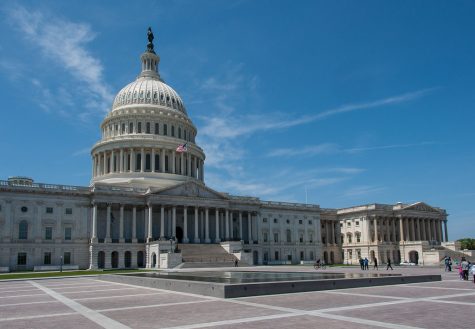US Air Raid Slays Qasem Soleimani
On January 3, 2020, Qasem Soleimani was killed by an American military airstrike. The U.S. blames Soleimani for orchestrating attacks on coalition bases in Iraq in recent months, including an attack on December 27 that culminated in the deaths of an American contractor and Iraqi personnel. Soleimani was Iran’s top general, and a man Iran’s supreme leader Ayatollah Khomeini once called a “living martyr of the revolution”. As the leader of the Revolutionary Guards’ Quds Force, Soleimani oversaw Iran’s actions overseas, especially in neighboring Middle Eastern countries.
The reactions to his death have varied greatly worldwide. Trump, in typical fashion, immediately went to Twitter, posting an image of an American flag as the news began to break. Democrats and Republicans had distinct reactions to the issue. While many Republicans supported Trump’s actions as a bold military move to take out the leader of what the US views as a ‘terrorist organization’, others, along with a volume of democrats, criticized Trump for his shortsightedness and his lack of discussion/communication with Congress beforehand. The President also later told reporters: “We took action last night to stop a war. We did not take action to start a war.”
In Tehran, the country mourned the loss of one of their leaders, and Iran’s Supreme Leader Ayatollah Ali Khamenei warned that a “harsh retaliation is waiting” for the U.S. After 5 days of waiting, that retaliation came in the form of an Iranian ballistic missile attack on airbases housing U.S. forces in Irbil and Al Asad on January 8. With this event, many feared another war in the Middle East on the horizon; however, both countries have since acted to deescalate the tension and pull away from war. Iranian Foreign Minister Mohammad Javad Zarif said the attack was self-defense and denied seeking to escalate the situation into war, citing Article 51 of the UN Charter on his Twitter (weird how much foreign policy is now just done over Twitter).
In Trump’s January 8th speech, he spoke towards a de-escalation of the tension between the two countries; however, he also said he would increase sanctions on Tehran and used the moment to attempt to get other countries to leave the Iran Nuclear Deal of 2016, which the U.S. already left last year. While there is no war on the horizon, interactions between the U.S. and Iran remain complex and charged, as interactions between the U.S. and Iran have been for decades.
To summarize the history between the U.S. and Iran as well as possible, I enlisted Urban’s own Modern Middle East teacher, Brooke Roberts. According to Brooke, there are two main components to the history between these two countries. The first main component is in 1953 overthrow of the democratically-elected Prime Minister Mohammad Mossadeq, which angers the Iranian people. He is replaced by a U.S.-backed Shah, who rules until 1979 when he is overthrown and the U.S. embassy is taken. Iran is important to the U.S. at this time as this all occurs during the Cold War, where the U.S. needs an ally in the area to combat the Soviet Union. This establishes the current Islamic Republic of Iran, ruled by Ayatollah Khomeini.
In the aftermath of the Gulf Wars, Iran’s power has only increased in the Middle East. By exploiting the disorder of its neighboring states and the conflict between the Sunnis and Shiites, Iran has become a symbol of strength and support for Shiite people groups in the region. As Iran’s top general and the leader of the Quds’ force, Soleimani has played a large role in this development. However, many of his actions in the region, especially in countries like Yemen and Iraq, have been what many other countries, including the U.S., have been considered terrorist actions. “The difference between an Osama bin Laden and a Soleimani is that Soleimani was an official in the Iranian military, a citizen of an actual nation, and while his actions were terrible, there are a lot of terrible actors in the world and we don’t go around assassinating them,” Roberts said.
At Urban, the topic has been heavily discussed by groups like Model UN and in classrooms throughout the school. Math teacher Laura Hawkins felt called to talk to her class about the issue, even if it didn’t necessarily fall into the guidelines of ‘math’: “While I don’t think it’s always right to bring your own passions and beliefs into a classroom, I had been talking about this with my family throughout break, and I felt like it was too important not to at least bring it up for discussion with my students,” Hawkins said. “It feels like a conversation everyone should have.”











